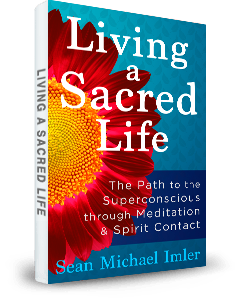When we embark on a quest to understand the vast landscape of spiritual beliefs, it is often enlightening to draw comparisons. Buddhism, one of the world’s oldest and most profound religions, is a perfect starting point. It’s a faith that is as intriguing as it is diverse, offering a wealth of principles and philosophies that often diverge drastically from those of other religions. Our aim is to unravel the intricacies of Buddhism through the lens of contrast, offering a unique perspective on this ancient faith.
Contents
In this article, we’ll draw parallels on the teachings of Buddhism and contrast them with the doctrines of other religions. We are not seeking to pass judgment or proclaim one faith superior to another. Rather, we hope that through the process of comparison, we can foster a greater understanding and appreciation of Buddhism’s unique perspective, as well as the diverse tapestry of spiritual paths available to us.
Buddhism is the fourth largest religion in the world.
Christian vs Buddhist Beliefs
As we delve into the comparison between Buddhism and Christianity, it is crucial to appreciate that these are two of the world’s most influential religions, each with its unique teachings, philosophies, and practices. Their origins, founders, and even their central tenets differ significantly, but interestingly, they both advocate for love, compassion, and living a morally upright life. Let’s explore these differences and similarities in more depth.
Origins and Founders
Firstly, Buddhism and Christianity differ in their origins and founders. Buddhism, as you may already know, was founded by Siddhartha Gautama (known as the Buddha) in the 5th century BCE in India. The Buddha was not a god but a man who achieved a state of perfect enlightenment and shared his teachings to help others achieve the same. His teachings are recorded in the sutras.
On the other hand, Christianity, founded in the 1st century CE in the Roman province of Judea, is based on the teachings of Jesus Christ. Christians believe Jesus to be the son of God and the savior of humanity, whose life and teachings are recorded in the New Testament of the Bible.
Beliefs and Teachings
Christianity’s core belief is in the Holy Trinity (God the Father, the Son (Jesus Christ), and the Holy Spirit). Salvation in Christianity is obtained through faith in Jesus Christ, repentance, and baptism. Christians also believe in Heaven and Hell as the ultimate destinations of the soul after death.
Contrastingly, Buddhism does not recognize a supreme god or deity. It is more of a way of life and a philosophy than a traditional, deity-worshiping religion. The central tenet of Buddhism is the Four Noble Truths, which essentially teach that suffering is an inherent part of existence, but by following the Noble Eightfold Path (right view, right intention, right speech, right action, right livelihood, right effort, right mindfulness, and right concentration), one can escape the cycle of rebirth and attain Nirvana—a state of ultimate peace and enlightenment.
Difference in Practices
Christian worship practices often involve congregational prayers in churches, reading from the Bible, singing hymns, and participating in sacraments such as the Eucharist (communion).
Buddhist practices, however, are quite different and often include meditation, observance of moral precepts, monasticism, and pilgrimage. The aim is to cultivate wisdom, ethical conduct, and mental discipline to achieve enlightenment.
Scriptures and Holy Books
Christianity’s holy book is the Bible, which is divided into two main sections: the Old Testament (before Jesus) and the New Testament (the life of Jesus and the early Church).
In Buddhism, there isn’t a single consolidated ‘holy book’ as such. Instead, the teachings of Buddha are spread across various texts such as the Tripitaka (or Pali Canon), Jataka tales, and sutras. The choice of texts can also differ between Theravada, Vajrayana and Mahayana Buddhists.
Note: Despite these differences, it’s important to remember that both Buddhism and Christianity promote messages of love, compassion, altruism, peace, and respect for others. While their practices and beliefs may differ, their ethical teachings often align in promoting a harmonious coexistence.
Islamic vs Buddhist Beliefs
As we delve deeper into the intricacies of Buddhism and Islam, it’s important to note that these religions, while distinct, share certain universal elements such as an emphasis on ethical living and spiritual growth. However, their teachings, practices, and perspectives on various aspects of life often differ significantly.
Buddhism, as we know, is centered around the teachings of Gautama Buddha, who advocated for a middle path between indulgence and asceticism, emphasizing the importance of mindfulness, meditation, and the Four Noble Truths. Islam, on the other hand, is based on the teachings of Prophet Muhammad as revealed in the Qur’an, which advocates for submission to the will of one monotheistic God (Allah) and upholds five fundamental pillars of faith.
Let’s examine some of these differences in greater detail:
- Concept of God: Buddhism refrains from discussing the existence or non-existence of a creator deity, focusing instead on an individual’s journey towards enlightenment (Nirvana). Islam, conversely, is monotheistic, asserting the existence of a single, omnipotent God (Allah) who is merciful and compassionate.
- Life After Death: Buddhism posits the concept of Samsara, a cycle of birth, death, and rebirth, from which one can achieve liberation (Nirvana) through right understanding and ethical conduct. Islam espouses a belief in an eternal afterlife, with Heaven (Jannah) and Hell (Jahannam) as the final destinations based on one’s earthly deeds.
- Salvation: In Buddhism, salvation (Nirvana) is achieved through self-effort, by following the Noble Eightfold Path. Islam teaches that salvation can be attained through faith in Allah, good deeds, and seeking Allah’s forgiveness.
Promoting Peace
It’s crucial to remember that despite these differences, both Buddhism and Islam promote peace, compassion, and ethical living. The core teachings aim to guide individuals towards leading fulfilling, purposeful lives.
These comparative aspects of Buddhism and Islam shed light on their distinct philosophies and practices. However, our understanding of any religion is enhanced when we appreciate the diversity within its followers, the socio-cultural contexts of its practices, and its evolution over time. This nuanced perspective helps us realize that religions, while having distinct doctrines, often share common values that promote harmony and mutual respect among diverse communities.
You may consider reading “Can Spirituality Exist Without God?“
Hindu vs Buddhist Beliefs
When we dive into the fundamental principles of Buddhism and Hinduism, an immediate distinction is the concept of God. Buddhism, founded by Gautama Buddha in the 6th century B.C., is essentially non-theistic. It does not subscribe to the belief in a personal God or divine being that governs the universe. Instead, Buddhism emphasizes the path to enlightenment (Nirvana) through the practice of morality, meditation, and wisdom (the Noble Eightfold Path).
On the other hand, Hinduism, an older religion originating in the Indian subcontinent, is a complex faith with a pantheon of gods and goddesses. It believes in an overarching cosmic power (Brahman) that manifests in various deities, each responsible for different aspects of life. The ultimate goal in Hinduism is to attain Moksha, liberation from the cycle of birth, death, and rebirth (Samsara).
While Buddhism emphasizes the attainment of enlightenment through personal effort, Hinduism underscores the importance of divine grace in achieving liberation.
There is also a significant difference in the perception of Self or Atman. Hinduism holds the belief in Atman, the immortal soul or self, which is eternal and divine. It teaches that the Atman is caught in the cycle of Samsara until it realizes its true divine nature and merges with the absolute reality, Brahman.
In stark contrast, Buddhism introduces the concept of Anatta, or non-self, which fundamentally denies the existence of an eternal soul or self. This is a core tenet of Buddhism, and it posits that the sense of self is merely an illusion, a transient and ever-changing phenomenon.
In Buddhism, the idea of Anatta implies the impermanence of ‘self’ and points towards the state of ‘no-self’ or ‘non-self’.
The Ethical Principles: Buddhism vs Hinduism
Both Buddhism and Hinduism uphold a high standard of ethics and morality. However, the approach to these principles varies. Buddhism proposes the Noble Eightfold Path, which encompasses right view, right intention, right speech, right action, right livelihood, right effort, right mindfulness, and right concentration. These principles form the ethical and moral framework for a Buddhist practitioner.
Hinduism, conversely, follows the Dharma (righteousness), Artha (meaning), Kama (desire), and Moksha (liberation) as the four goals of human life. Alongside these, the Yamas (restraints) and Niyamas (observances), which include principles like truthfulness, non-violence, contentment, austerity, and self-study, form the ethical code in Hinduism.
Although both religions advocate towards non-violence, compassion, and ethical living, the routes they propose are uniquely grounded in their philosophical foundations. Thus, while Buddhism focuses on personal effort towards enlightenment, Hinduism emphasizes the combination of personal effort, devotion, and divine grace.
Taoist vs Buddhist Beliefs
As we shift our focus to the comparison between Buddhism and Taoism, it’s critical to understand that both religions originate from the East (specifically, Buddhism from India and Taoism from China). They share some commonalities in their approach to spirituality and the nature of existence. However, they fundamentally diverge in certain aspects, notably their perspectives on the self, the path to enlightenment, and the nature of the ultimate truth.
Buddhism, founded by Siddhartha Gautama (the Buddha) in the 6th century BC, centers its teachings on the Four Noble Truths and the Eightfold Path. The Four Noble Truths expound on the nature of suffering (dukkha) and its cessation. The Eightfold Path, on the other hand, offers a practical guide to ethical living and spiritual advancement.
On the contrary, Taoism, founded by Lao Tzu, is anchored on the concepts of Tao (the Way) and Wu Wei (effortless action). Tao refers to the indescribable ultimate truth or the natural order of the universe. Wu Wei emphasizes the importance of aligning with this Tao, acting naturally without striving or exerting effort against the flow of life.
When we consider the concept of self, Buddhism proposes the concept of Anatta (no-self). It posits that the idea of a permanent, unchanging self is an illusion, and clinging to this notion causes suffering. However, Taoism holds a somewhat different view. It proposes that each individual has a spiritual essence (a self), which is part of the Tao, and that realizing this connection is the key to aligning with the Tao.
Toward Enlightenment
Both Buddhism and Taoism propose paths towards enlightenment (Nirvana in Buddhism and ‘becoming one with the Tao’ in Taoism). The Buddhist Eightfold Path is a guide for ethical and mindful living, encompassing wisdom, moral conduct, and concentration. Taoism’s approach is more about effortless action (Wu Wei), simplicity, spontaneity, and naturalness.
It’s noteworthy that while both religions emphasize non-attachment and the cyclical nature of existence, Buddhism lays a heavier emphasis on the cessation of suffering and the achievement of Nirvana, whereas Taoism focuses more on living in harmony with the Tao.
In essence, while Buddhism and Taoism share an Eastern origin and some conceptual similarities, they diverge significantly in their teachings and practices. Buddhism places a considerable emphasis on ethical living, mindfulness, and the cessation of suffering, leaning heavily on a structured path (the Eightfold Path). Taoism, conversely, leans more towards simplicity, spontaneity, and harmony with nature, with a focus on the realization and alignment with the Tao.
As we venture deeper into the exploration of these philosophical and spiritual systems, these differences will become even more evident, offering us valuable insights into the diversity and richness of Eastern spirituality.
Confucian vs Buddhist Beliefs
When comparing Buddhism and Confucianism, there are several key distinctions and similarities that emerge. These two Eastern philosophies, while hailing from similar geographical origins, have individual characteristics that set them apart, yet also share commonalities which reflect their shared cultural milieu.
Buddhism, a spiritual tradition originating from the teachings of Siddhartha Gautama, the Buddha, focuses primarily on the individual’s spiritual journey towards liberation from the cycle of birth and death, a process known as enlightenment, or nirvana. The Four Noble Truths, which outline the existence of suffering and the path to its cessation, and the Eightfold Path, a guide to ethical living, form the fundamental principles of Buddhism.
In contrast, Confucianism, rather than being a religion per se, is primarily a philosophical and ethical system based on the teachings of Confucius. It emphasizes virtues such as filial piety, loyalty, and humaneness, and upholds the importance of maintaining harmonious relationships within society. The Five Relationships – ruler and subject, father and son, husband and wife, older brother and younger brother, and friends – form the cornerstone of Confucianism.
Ethical Conduct
Despite the differences in the focal points of Buddhism and Confucianism, they share a common commitment to ethical conduct. Both systems promote the cultivation of virtues and moral behavior. In Buddhism, this is manifest in the Eightfold Path, which guides followers in right speech, right action, and right livelihood. In Confucianism, the virtues of benevolence, righteousness, propriety, wisdom, and trustworthiness form the basis of moral rectitude.
Note that in both Buddhism and Confucianism, the ultimate aim is not divine communion, as in many Western religions, but rather personal and social harmony, achieved through ethical living and moral cultivation.
Yet, the ways in which individual followers are expected to reach these aims diverge significantly. In Buddhism, the emphasis is on the inner journey of self-discovery, meditation, and spiritual awakening. On the other hand, Confucianism focuses more on external social conduct and the roles and responsibilities that one must perform within society.
When comparing Buddhism and Confucianism, it is important to remember that these are broad generalizations and that there are multiple schools and interpretations within each tradition. However, understanding these key distinctions and similarities can provide a valuable lens through which to view and understand these rich and complex philosophical systems.
Jain vs Buddhist Beliefs
One of the most illuminating comparisons of Buddhism can be made with Jainism, another philosophy that emerged out of the complex religious milieu of ancient India around the same time. Although they share a common cultural and historical context, and possess some superficial similarities, these two faiths are rooted in distinctly divergent belief systems and spiritual practices.
In terms of their foundational principles, the most significant divergence lies in their respective views on the nature of the self and the universe. While Buddhism, specifically in its Theravada tradition, advances the concept of Anatta or Anatman—the notion that there is no unchanging, permanent self or soul—Jainism strongly affirms the existence of an eternal soul (Jiva) that survives death and carries karmic particles from one life to another.
Buddhism and Jainism, ancient Indian philosophies, offer contrasting views on the nature of the self and the universe. Where Buddhism negates the idea of an eternal soul, Jainism upholds it.
Another key difference can be found in their respective attitudes towards the physical world. Jainism, in its emphasis on non-violence (Ahimsa), frequently advocates for asceticism and stringent physical discipline as a means to liberate the soul from the cycle of birth, death, and rebirth (Samsara). Buddhism, on the other hand, while acknowledging the impermanence (Anicca) and suffering (Dukkha) inherent in existence, promotes the Middle Way—a path of moderation between indulgence and austerity—as the path to enlightenment (Nibbana or Nirvana).
Shared Principles
Despite these differences, it is important to note the shared ethical principles between Buddhism and Jainism. Both religions espouse a code of conduct centered around non-violence, truthfulness, non-stealing, chastity, and non-attachment. These principles, however, are interpreted and applied in different contexts within each religion.
While Jainism advocates for rigorous asceticism, Buddhism promotes the Middle Way—a path of moderation. However, both religions value ethical conduct, focusing on principles such as non-violence and truthfulness.
| Buddhism | Jainism | |
|---|---|---|
| View of Self | No permanent self (Anatta) | Eternal soul (Jiva) |
| Attitude to Physical World | Moderation (Middle Way) | Asceticism |
| Principle of Conduct | Non-violence, Truthfulness, Non-stealing, Chastity, Non-attachment | Non-violence, Truthfulness, Non-stealing, Chastity, Non-attachment |
While Buddhism and Jainism may share a common historical and cultural context, they represent two distinct philosophical traditions, each with its own unique interpretation of the nature of the self, the universe, and the path to liberation. Through the lens of comparison, we can better appreciate the diversity and richness of these ancient Indian philosophies.
Sikh vs Buddhist Beliefs
In engaging with a comparison between Buddhism and Sikhism, a thoughtful analysis reveals divergences in their core principles, even as they both take roots in the fertile spiritual ground of the Indian subcontinent. Buddhism, founded by Siddhartha Gautama, or the Buddha, in the 6th century BCE, is a path of spiritual development leading to Insight into the true nature of reality. In contrast, Sikhism, initiated by Guru Nanak in the 15th century CE, emphasizes faith and meditation on the name of the one creator, unity of all humankind, and selfless service.
From a theological perspective, Buddhism is non-theistic, it does not involve the worship of deities, considering such worship as a distraction from the pursuit of inner peace and enlightenment. This stands in stark contrast to Sikhism, which is monotheistic and holds strong belief in a single, formless God, who is the same for all, regardless of religion.
Buddhism does not advocate the existence of a personal deity or creator-God, while Sikhism emphasizes the omnipresence of one universal God.
Moreover, the concept of suffering and the means to end it forms a crucial part of Buddhism, embodied in the Four Noble Truths and the Noble Eightfold Path. These principles elucidate that suffering exists, it has a cause, it has an end, and there is a path that leads to the end of suffering. On the other hand, Sikhism does not focus on suffering in the same way. Instead, it teaches that life is an opportunity to understand God and unify with him, thereby achieving salvation.
- Buddhism: Emphasizes the end of suffering through personal effort following the Eightfold Path
- Sikhism: Focuses on unifying with God through devotion and service
Scriptures and Systems
In terms of religious scriptures, Buddhists follow the teachings of the Buddha as recorded in the Tripitaka or the Pali Canon, whereas Sikhs adhere to the teachings of the ten Gurus, inscribed in the Guru Granth Sahib.
| Buddhism | Sikhism |
|---|---|
| Follows the Tripitaka or Pali Canon | Adheres to the Guru Granth Sahib |
Despite these differences, Buddhism and Sikhism share some similarities, such as the rejection of the caste system prevalent in India, and the belief in karma and reincarnation. However, the ways they understand and interpret these concepts differ, reflecting the unique philosophical underpinnings of each religion. Also, like other eastern religions, Sikhism believes that all beings have an eternal self known as Atma. This contrasts with Buddhism’s non-self or Anatta and the belief that the idea of a self is an illusion.
Thus, while Buddhism and Sikhism seem to converge in their promotion of compassion, morality, and ethical conduct, they diverge significantly in their theological and philosophical principles. This comparison underscores the rich diversity of spiritual perspectives that have emerged across different historical and cultural contexts.
Stoic vs Buddhist Beliefs
When delving into the exploration of Buddhism and Stoicism, it becomes evident that both of these philosophical systems harbor a number of striking similarities, as well as some noteworthy differences. As such, the comparison between these two can provide an enriched understanding of the nuances of their respective beliefs and practices.
Both Buddhism and Stoicism, despite being geographically and historically distinct, share a common emphasis on the cultivation of virtue and wisdom, and the pursuit of an ethical life. They urge their followers to rise above destructive emotions and desires, encouraging them instead to strive for inner peace and tranquility. Through this, they both offer a guide to living a fulfilled life, despite the inevitable hardships that one might face.
“Just as a candle cannot burn without fire, men cannot live without a spiritual life.”
~Buddha
The Divergence
However, where Buddhism and Stoicism converge in their pursuit of virtue, they diverge in their conceptualization of the world and the nature of existence. Buddhism, in its various forms, encompasses a complex metaphysical system that includes beliefs in reincarnation, karma, and the attainment of nirvana, a state of liberation from the cycle of birth and death. Stoicism, on the other hand, while acknowledging the existence of divine order in the cosmos, largely refrains from making metaphysical claims.
| Buddhism | Stoicism | |
|---|---|---|
| Focus | Spiritual liberation (nirvana) | Living virtuously, in accordance with nature |
| View of suffering | Rooted in desire and attachment | Caused by incorrect judgments and misguided desires |
| Path to tranquility | Following the Eightfold Path, meditation, and mindfulness | Practicing virtue, wisdom, and self-control |
| Metaphysical beliefs | Rebirth, karma, multiple realms of existence | Divine order in the cosmos, but no specific claims about afterlife |
It is crucial to understand that these differences do not make one philosophy superior to the other, but rather they illuminate the distinct cultural contexts and intellectual traditions from which they emerged. By comparing Buddhism and Stoicism, we are not only introduced to different perspectives on life and existence, but also invited to reflect upon our own beliefs and practices, thereby deepening our understanding of the human condition.
All major religious traditions carry basically the same message, that is love, compassion and forgiveness … the important thing is they should be part of our daily lives.
-Dalai Lama
Shamanic vs Buddhist Beliefs
Buddhism, originating from the Indian subcontinent in the 5th century BCE, is a spiritual tradition that centers around the teachings of Siddhartha Gautama, known as the Buddha. The core principles of Buddhism revolve around the Four Noble Truths, which assert that life is permeated with suffering (dukkha), suffering originates from desire (tanha), suffering can cease, and following the Eightfold Path is the means to accomplish this. Buddhism encourages the cultivation of wisdom (prajna), ethical conduct (sila), and meditation (samadhi) as conduits towards achieving enlightenment (nirvana).
In stark contrast, Shamanism is a vast collection of spiritual practices shared by many indigenous cultures worldwide, rather than a unified religion with a single origin. At its heart, Shamanism is centered around the shaman, a spiritual guide or healer who serves as a bridge between the human and spiritual realms. While practices can vary widely, common tenets include the belief in a multitude of spirits, the practice of divination and healing, and the use of trance states for spiritual journeys.
Despite their profound differences, Buddhism and Shamanism share some thematic overlaps. Both systems place significant emphasis on the internal spiritual journey and transformation of the self. However, whereas Buddhism leans towards introspection and self-examination as tools for enlightenment, Shamanism tends to accentuate direct engagement with spiritual beings and forces. This difference manifests in the respective practices of meditation in Buddhism and trance states in Shamanism.
Overlap of Shamanism and Vajrayana Buddhism
Despite the clear distinctions between Shamanism and Buddhism, an intriguing overlap exists in the sphere of Vajrayana Buddhism. Vajrayana Buddhism, often recognized as Tibetan Buddhism, has incorporated elements of Bon, the indigenous shamanic tradition of Tibet. This amalgamation has resulted in a unique blend of shamanic and Buddhistic practices that intertwine the pursuit of personal enlightenment and harmonious living with nature.
| Aspect | Vajrayana Buddhism | Shamanism |
|---|---|---|
| Spiritual Goal | Personal Enlightenment | Community Healing |
| View of Spirits | Entities to be respected and understood for personal growth | Entities to be interacted with for healing and balance |
| Practices | Mantras, meditation, rituals | Spirit journeys, rituals, divination |
The confluence of these two spiritual traditions is a testament to the adaptability and fluidity of human spiritual pursuits. The incorporation of shamanic elements in Vajrayana Buddhism exhibits the understanding that personal enlightenment and communal harmony are not mutually exclusive, but rather interconnected facets of our spiritual existence.
It could be said, therefore, that Vajrayana Buddhism represents a synergistic fusion between Buddhism and Shamanism, combining the quest for personal enlightenment with a shamanistic emphasis on community healing and an intimate connection with nature.
- Unique Practices: Vajrayana Buddhism employs practices such as deity yoga and complex rituals, which, while rooted in Buddhist philosophy, also evoke shamanic traditions of invoking spiritual entities.
- Nature Reverence: Similar to Shamanism, Vajrayana Buddhism places high importance on the reverence of nature and its elements, recognizing them as manifestations of the divine.
- Community Healing: Like Shamanism, Vajrayana Buddhism also emphasizes the healing of the community and the world at large, often through complex rituals and ceremonies.
Ghosts and Discarnate Spirits
In Buddhism, the belief in ghosts and discarnate entities comes from a deep understanding of karma and rebirth. The Buddhist scriptures, particularly in the Jataka and Peta-vatthu texts, contain stories that describe beings reborn as ghosts due to the unwholesomeness of their previous action or karma. These beings, often depicted as suffering in the realm of the hungry ghosts or Peta-loka, are part of the six realms of existence in the cyclical samsara of Buddhist cosmology.
“Just as a shadow follows the body, so too we are followed by Karma. What we do is who we become.”
~Buddhist Proverb
Shamanism’s Interpretation of Ghosts and Spirits
Shamanism, rather than a religion, is more of a spiritual practice that dates back to prehistoric times. In this tradition, the existence of spirits is a core belief. Shamans, the spiritual leaders, possess the ability to communicate with these spirits in an altered state of consciousness. They mediate between the physical and spiritual world, seeking guidance from the spirits for healing and other important community matters. Unlike Buddhism where the ghosts are past beings suffering as a result of their karma, in Shamanism, spirits are seen as sources of wisdom and healing.
Comparative Analysis of Buddhist and Shamanic Beliefs
| Buddhism | Shamanism |
|---|---|
| Belief in ghosts as beings suffering due to their past karma. | Spirits are seen as sources of wisdom and healing. |
| Interactions with ghosts are not a common practice. | Shamans regularly communicate with spirits in altered states of consciousness. |
| Focuses on personal enlightenment and escape from cycle of rebirth. | Emphasizes community healing and balance with nature. |
While both Buddhism and Shamanism acknowledge the existence of spirits or ghosts, they approach and interpret these entities in distinctly different manners. This stems from their foundational principles and spiritual goals. Buddhism primarily emphasizes personal enlightenment to escape the cycle of rebirth, while Shamanism focuses on community healing and maintaining a harmonious balance with nature.
In Conclusion
If you have an interest in the mindfulness principles and meditation techniques of Buddhism, as well as the invocation of spiritual assistance for healing and revelation utilized in Shamanic practices, consider the Living a Sacred Life courses.
If you’d like to go into more depth around the principles of Buddhism, be sure to read, “Buddhism and Its Teachings on Human Matters.”












